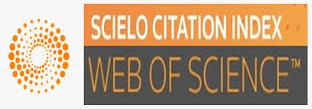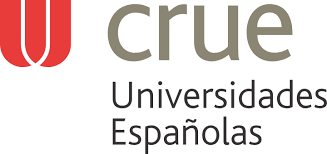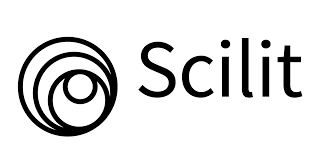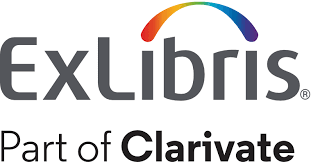Remoción de sustancias disruptoras endocrinas "levonorgestrel" en fuentes hídricas
DOI:
https://doi.org/10.22335/rlct.v8i1.305Palabras clave:
Contaminantes emergentes, disruptores endocrinos, gestión ambiental.Resumen
La sostenibilidad global del agua depende en parte de su reutilización efectiva, en particular, de las aguas residuales siendo fundamental para el riego y el aumento de abastecimiento de agua potable. Sin embargo, hay preocupación por la presencia de concentraciones de trazas de los productos farmacéuticos y los EDC en las aguas residuales. Debido a que los efectos de los procesos naturales o antropogénicos impulsados, como el flujo natural de temporada o la variabilidad climática/sequía prolongada, son factores que pueden alterar drásticamente las concentraciones de estos compuestos. Para este trabajo se realizó una revisión de los contaminantes emergentes que se encuentran presentes en las fuentes de agua en específico los compuestos disruptores endocrinos, debido a que el impacto de estas progestinas como el levonorgestrel (LNG) puede afectar negativamente la reproducción y crecimiento de organismos acuáticos. El interés de este tema de investigación es proponer una estrategia que permita el tratamiento y control del LNG en las aguas residuales, a partir del cumplimiento de la normatividad y el uso de diferentes tecnologías de remoción o conversión de estos contaminantes, debido a que se hace necesario obtener información precisa sobre la eliminación de estos contaminantes, su atenuación natural en el ambiente y el impacto de las descargas de aguas residuales en cuerpos de aguas superficiales o subterráneas.
Descargas
Referencias
Aguinaco, A., Beltrán, F. García, J. and Oropesa, A. (2012). “Photocatalytic ozonation to remove the pharmaceutical diclofenac from water: Influence of variables”, Chemical Engineering Journal, ISSN 1385-8947, 189–190, pp. 275-282, recuperado de: http://www.sciencedirect.com/science/article/pii/S1385894712003051.
Anumol, T., Merel, S., Clarke, B., and Snyder, S. (2013). “Ultra high performance liquid chromatography tandem mass spectrometry for rapid analysis of trace organic contaminants in water”. Chemistry Central Journal, 7(1), pp. 1-14, recuperado de:
http://www.biomedcentral.com/content/pdf/1752-153X-7-104.pdf
Ashby, J., Houthoff, E., Kennedy, S., Stevens, J., Bars, R., Jekat, F., Campbell, P., Van Miller, J., Carpanini, F., and Randall, G. (2011). “The challenge posed by endocrine-disrupting chemicals”. Environ Heal Perspect 105(2), pp. 164–69
Barber, L. (2014). “1.13 - Emerging Contaminants, In Comprehensive Water Quality and Purification”, edited by SatinderAhuja, Elsevier, Waltham, ISBN 9780123821836,pp. 245-266, recuperado de:
http://www.sciencedirect.com/science/article/pii/B9780123821829000153
Barceló, D. y López, M. (2007). “Contaminación y calidad química del agua: el problema de los contaminantes emergentes”. Panel Científico- Técnico de seguimiento de la política de aguas. Instituto de InvestigacionesQuímicas y Ambientales-CSIC. Barcelona.
Barnes, K., et al. (2008). “A national reconnaissance of pharmaceuticals and other organic wastewater contaminants in the United States - I) Groundwater”.Sci Total Environ. Vol. 402, pp. 192-200.
Bhatnagar, A., and Sillanpaa, M. (2011).“A review of emerging adsorbents for nitrate removal from water”.Chemical Engineering Journal. ISSN 1385-8947, 168(2), pp.493–504, recuperado de:
http://www.sciencedirect.com/science/article/pii/S1385894711001689
Birkholz, D., Stilson, S., and Elliott, H. (2014).“Analysis of Emerging Contaminants in Drinking Water”. In Comprehensive Water Quality and Purification, ISBN 9780123821836, Vol. 2, pp. 212-229. recuperado de:
http://www.sciencedirect.com/science/article/pii/B9780123821829000359
Bolong, N., et al. (2009). “A review of the effects of emerging contaminants in wastewater and options for their removal”.Desalination. Vol. 239, pp. 229-246
Brack, W., Dulio, V., and Slobodnik, J. (2012).“The NORMAN Network and its activities on emerging environmental substances with a focus on effect-directed analysis of complex environmental contamination”. EnvironmentalSciencesEurope, 24(1), pp. 1-5, recuperado de:
http://link.springer.com/article/10.1186/2190-4715-24-29
Brooks, B., Berninger, J., Kristofco, L., Ramirez, A., Stanley, J., and Valenti, T. (2012). “Chapter Eight - Pharmaceuticals in the Environment: Lessons Learned for Reducing Uncertainties in Environmental Risk Assessment”, Progress in Molecular Biology and Translational Science, Academic Press, ISSN 1877-1173, ISBN 9780124158139, Vol. 112, pp. 231-258, recuperado de:http://www.sciencedirect.com/science/article/pii/B9780124158139000088
Carsten, P., Dulio, V., Slobodnik, J., Deckere, E., Kühne, R., Ebert, R., Ginebreda, A., Cooman, W., Schüürmann, G., and Brack, W. (2011). “A new risk assessment approach for the prioritization of 500 classical and emerging organic microcontaminants as potential river basin specific pollutants under the European Water Framework Directive”, Science of The Total Environment, ISSN 0048-9697, Vol. 409(11), pp. 2064-2077, recuperado de:
http://www.sciencedirect.com/science/article/pii/S0048969711001136
Chong, M., Jin, B., Laera, G., Saint, C. (2011).“Evaluating the photodegradation of carbamazepine in a sequential batch photoreactor system: impacts of effluent organic matter and inorganic ions”.ChemEng J: 174, pp. 595–602.
Daughton, C., and Ruhoy, I.(2013). “Lower-dose prescribing: Minimizing “side effects” of pharmaceuticals on society and the environment”, Science of The Total Environment, Vol. 443, pp. 324-337, ISSN 0048-9697, recuperado de:
http://www.sciencedirect.com/science/article/pii/S0048969712013927
Desbrow, C., Routledge, E., Brighty, G., Sumpter, J. &Waldock, M. (1998).“Identification of estrogenic chemicals in STW effluent.Chemical fractionation and in vitro biological screening”. Environ. Sci. Technol. 32(11), pp. 1549–1558.
Dougherty, J., Swarzenski, P., Dinicola, R., and Reinhard, M. (2010).“Occurrence of herbicides and pharmaceutical and personal care products in surface water and groundwater around Liberty Bay, Puget Sound, Washington”. Journal of Environmental Quality, Vol. 39, pp. 1173-1180.
Eggen, T., Heimstad, E., Stuanes, A., and Norli, H. (2013).“Uptake and translocation of organophosphates and other emerging contaminants in food and forage crops”. Environmental Science and Pollution Research, Vol. 20(7), pp. 4520-4531, recuperado de:
http://link.springer.com/article/10.1007/s11356-012-1363-5
Escher, B, Baumgartner, R., Koller, M., Treyer, K., Lienert, J., and McArdell, C. (2011). “Environmental toxicology and risk assessment of pharmaceuticals from hospital wastewater”, Water Research, ISSN 0043-1354, Vol. 45(1), pp. 75-92, recuperado de:
http://www.sciencedirect.com/science/article/pii/S004313541000583X
Fatta, D., and Michael, C. (2013). “Wastewater reuse applications and contaminants of emerging concern”. EnvironmentalScience and PollutionResearch, Vol. 20, pp. 3493–3495, recuperado de:
http://link.springer.com/article/10.1007/s11356-013-1699-5
García, N., Suárez, S., Sánchez, B., Coronado, J., Malato, S., and Maldonado, M. (2011). “Photocatalytic degradation of emerging contaminants in municipal wastewater treatment plant effluents using immobilized TiO2 in a solar pilot plant”, Applied Catalysis B: Environmental, ISSN 0926-3373, 103(3-4), pp. 294-301, recuperado de:
http://www.sciencedirect.com/science/article/pii/S0926337311000397
García C., Gortáres P. y Drogui P. (2011). “Contaminantes emergentes: efectos y tratamientos de remoción”, Revista Química Viva, ISSN 1666-7948, No 2, pp. 96-115, recuperado de:
http://www.quimicaviva.qb.fcen.uba.ar/v10n2/garcia.pdf
García, N., Suárez, S., Maldonado, M., Malato, S., and Sánchez, B. (2014). “Regeneration approaches for TiO2 immobilized photocatalyst used in the elimination of emerging contaminants in water”, Catalysis Today, ISSN 0920-5861, recuperado de:
http://www.sciencedirect.com/science/article/pii/S092058611400025X
Gavrilescu, M., Demnerová, K., Aamand, J., Agathos, S., Fava, F. (2014). “Emerging pollutants in the environment: present and future challenges in biomonitoring, ecological risks and bioremediation”, New Biotechnology, ISSN 1871-6784, recuperado de:
http://www.sciencedirect.com/science/article/pii/S1871678414000028
Gil, M., Soto, A., Usma, J., and Gutiérrez, O. (2012).“Emerging contaminants in waters: effects and possible treatments”.Revista Producción + Limpia, 7(2), pp. 1-6, recuperado de:
http://dialnet.unirioja.es/servlet/articulo?codigo=4333973
González, S., López, R., and Cortina, J. (2012). “Presence and biological effects of emerging contaminants in Llobregat River basin: A review”, Environmental Pollution, ISSN 0269-7491, Vol. 161, pp. 83-92, recuperado de:
http://www.sciencedirect.com/science/article/pii/S0269749111005604
Helfman, G. (2007). “Fish conservation: a guide to understanding and restoring global aquatic biodiversity and fishery resources”. Island Press, Washington.
Huckele, S., and Track, T. (2013). “Risk management of emerging compounds and pathogens in the water cycle RiSKWa)”.EnvironmentalSciencesEurope, Vol. 25(1), pp. 1-4. Recuperado de:
http://link.springer.com/article/10.1186/2190-4715-25-1
Hutchinson, T., Lyons, B., Thain, J., and Law, R. (2013). “Evaluating legacy contaminants and emerging chemicals in marine environments using adverse outcome pathways and biological effects-directed analysis”. Marine Pollution Bulletin. ISSN 0025-326X, 74(2), pp. 517-525, recuperado de:
http://www.sciencedirect.com/science/article/pii/S0025326X13003032
Jiang, J., Lee, C., and Fang, M. (2014).“Emerging organic contaminants in coastal waters: Anthropogenic impact, environmental release and ecological risk”. Marine Pollution Bulletin, ISSN 0025-326X, Available online 16 January 2014, recuperado de:
http://www.sciencedirect.com/science/article/pii/S0025326X13007935
Martínez Lozano, J., Vergel Ortega, M., & Zafra Tristancho, S. (2015). Validez de instrumento para medir la calidad de vida en la juventud: VIHDA. Revista Logos Ciencia & Tecnología, 7(1), 20-28. Recuperado de http://revistalogos.policia.edu.co/index.php/rlct/article/view/206.
Miralles, S., Oller, I., Ruiz,A., Sánchez, J.Malato, S. (2014). “Removal of pharmaceuticals at microg L−1 by combined nanofiltration and mild solar photo-Fenton”, Chemical Engineering Journal, ISSN 1385-8947, 239(1), pp. 68-74, recuperado de:
http://www.sciencedirect.com/science/article/pii/S138589471301365X.
Mohapatra, D., Brar, S., Tyagi, R., Picard, P. and Surampalli, R. (2014). “Analysis and advanced oxidation treatment of a persistent pharmaceutical compound in wastewater and wastewater sludge-carbamazepine”, Science of The Total Environment, ISSN 0048-9697, 470–471(1), pp. 58-75, recuperado de:
http://www.sciencedirect.com/science/article/pii/S0048969713010723.
Murnyak, G., Vandenberg, J., Yaroschak, P., Williams, L., Prabhakaran, K., and Hinz, J. (2011). “Emerging contaminants: Presentations at the 2009 Toxicology and Risk Assessment Conference”, Toxicology and Applied Pharmacology, Vol. 254(2), ISSN 0041-008X, pp. 167-169, recuperado de:
http://www.sciencedirect.com/science/article/pii/S0041008X1000414X
Murray, K., Thomas, S., and Bodour, A. (2010). “Prioritizing research for trace pollutants and emerging contaminants in the freshwater environment”, Environmental Pollution, Vol. 158[12], ISSN 0269-7491, pp. 3462-3471, recuperado de:
http://www.sciencedirect.com/science/article/pii/S0269749110003477.
Murray, A., andÖrmeci, B. (2012). “Application of molecularly imprinted and non-imprinted polymers for removal of emerging contaminants in water and wastewater treatment: a review”. Environmental Science and Pollution Research,19(9), pp. 3820-3830, recuperado de:
http://link.springer.com/article/10.1007/s11356-012-1119-2.
Nasuhoglu, D., Berk, D., and Yargeau, V. (2012). “Photocatalytic removal of 17α-ethinylestradiol (EE2) and levonorgestrel (LNG) from contraceptive pill manufacturing plant wastewater under UVC radiation”, Chemical Engineering Journal, ISSN 1385-8947, Vol. 185–186, pp. 52-60, recuperado de: http://www.sciencedirect.com/science/article/pii/S1385894712000150
Nelson, E., Do, H., Lewis, R., Carr, S. (2011).“Diurnal variability of pharmaceutical, personal care product, estrogen and alkylphenol concentrations in effluent from a tertiary wastewater treatment facility”. Environmental Science & Technology 45, pp. 1228-1234.
Nurmi, J., and Pellinen, J. (2011). “Multiresidue method for the analysis of emerging contaminants in wastewater by ultra performance liquid chromatography–time-of-flight mass spectrometry”, Journal of Chromatography A, ISSN 0021-9673, 1218(38,23), pp. 6712-6719, recuperado de:
http://www.sciencedirect.com/science/article/pii/S0021967311011101.
Olivero, J. (2011). “Colombia: Environmental Health Issues”, In Encyclopedia of Environmental Health, ISBN 9780444522726, pp. 740-754, recuperado de:
http://www.sciencedirect.com/science/article/pii/B9780444522726003950.
Overturf, M., Overturf, C., Carty, D., Hala, D., and Huggett, D. (2014). “Levonorgestrel exposure to fathead minnows (Pimephalespromelas) alters survival, growth, steroidogenic gene expression and hormone production”, Aquatic Toxicology, ISSN 0166-445X, Vol. 148, pp. 152-161, recuperado de:
http://www.sciencedirect.com/science/article/pii/S0166445X14000162
Pal, A., Hoong, K., Chen, and A., Reinhard, M. (2010). “Impacts of emerging organic contaminants on freshwater resources: Review of recent occurrences, sources, fate and effects”, Science of The Total Environment, ISSN 0048-9697, Vol. 408(24), pp. 6062-6069, recuperado de:
http://www.sciencedirect.com/science/article/pii/S0048969710009873
Pedraza, E. et al (2016). Variables más influyentes en la calidad del agua del río Bogotá mediante análisis de datos. Revista Logos Ciencia & Tecnologia. Volumen 7, numero 2. Pp 35 – 43.
Pérez, S. y Barceló, D.(2007). “Fate and occurrence of X-ray contrast media in the environment”. Anal Bioanal Chem. Vol. 387, pp. 1235-1246
Poynton, H. y Vulpe, C. (2009).“Ecotoxicogenomics: Emerging Technologies for Emerging Contaminants”. Journal of the American Water Resources Association. Vol. 45, pp. 83–96.
Prieto, L., Miralles, S., Oller, I., Agüera, A., Li Puma, G., and Malato, S. (2012). “Treatment of emerging contaminants in wastewater treatment plants (WWTP) effluents by solar photocatalysis using low TiO2 concentrations”. Journal of Hazardous Materials. ISSN 0304-3894, 211–212(15), pp. 131-137, recuperado de: http://www.sciencedirect.com/science/article/pii/S0304389411011083
Qingwei, B., Wang, B., Huang, J., Deng, S., and Gang, Y. (2013) “Pharmaceuticals and personal care products in the aquatic environment in China: A review”, Journal of Hazardous Materials, ISSN 0304-3894, Vol. 262, pp. 189-211, recuperado de:
http://www.sciencedirect.com/science/article/pii/S0304389413006067
Rivera, J., Sánchez, M., Ferro, M., Prados, G., Ocampo, R. (2013). “Pharmaceuticals as emerging contaminants and their removal from water. A review”, Chemosphere, ISSN 0045-6535, Vol. 93(7), pp. 1268-1287, recuperado de:
http://www.sciencedirect.com/science/article/pii/S0045653513010436
Robles, J., Gilbert, B., García, J., and Molina, A. (2014). “Monitoring of selected priority and emerging contaminants in the Guadalquivir River and other related surface waters in the province of Jaén, South East Spain”. Science of The Total Environment, ISSN 0048-9697, 479–480(1), pp. 247-257, recuperado de:
http://www.sciencedirect.com/science/article/pii/S0048969714001508
Rodríguez, E., Fernández, G., Álvarez, P., and Beltrán, F. (2012). “TiO2 and Fe (III).Photocatalytic ozonation processes of a mixture of emergent contaminants of water”, Water Research, ISSN 0043-1354, 46(1), pp. 152-166, recuperado de:
http://www.sciencedirect.com/science/article/pii/S0043135411006361
Rubio, A., Chica, E., and Peñuela, G. (2013). “Wastewater Treatment Processes For The Removal of emerging organic pollutants [Procesos de tratamiento de aguas residuales para la eliminación de contaminantes orgánicos emergentes]”. Revista Ambiente y Agua, 8(3), pp. 93-103. recuperado de:
Sauvé, S. and Desrosiers M. (2014).“A review of what is an emerging contaminant”. Chemistry Central Journal, 8:15. pp. 1-7. Recuperado de:
http://www.biomedcentral.com/content/pdf/1752-153X-8-15.pdf
Secondes, F., Naddeo, V., Belgiorno, V., and Ballesteros, F. (2014). “Removal of emerging contaminants by simultaneous application of membrane ultrafiltration, activated carbon adsorption, and ultrasound irradiation”, Journal of Hazardous Materials, ISSN 0304-3894, 264(15), pp. 342-349, recuperado de:
http://www.sciencedirect.com/science/article/pii/S030438941300890X.
Silveira, M., Caldas, S., Guilherme, J., Costa, F., Guimarães, B., Cerqueira, M., Soares, B., and Primel, E. (2013). “Quantification of pharmaceuticals and personal care product residues in surface and drinking water samples by SPE and LC-ESI-MS/MS”. Journal of the Brazilian Chemical Society, 24 (9), pp. 1385-1395, recuperado de:
Snyder, S., and Benotti, M. (2010). “Endocrine disruptors and pharmaceuticals: implications for water sustainability”. Water Science & Technology—WST, Vol. 61(1), pp. 145–154, recuperado de:
http://www.iwaponline.com/wst/06101/0145/061010145.pdf.
Songhu Yuan, Na Gou, Alshawabkeh, A., and April Gu. (2013). “Efficient degradation of contaminants of emerging concerns by a new electro-Fenton process with Ti/MMO cathode”, Chemosphere, ISSN 0045-6535, 93(11), pp.2796-2804, recuperado de: http://www.sciencedirect.com/science/article/pii/S0045653513012915.
Sotelo, J., Ovejero, G., Rodríguez, A., Álvarez, S., Galán, J. and García, J. (2014). “Competitive adsorption studies of caffeine and diclofenac aqueous solutions by activated carbon”, Chemical Engineering Journal, ISSN 1385-8947, 240(15), pp. 443-453, recuperado de:
http://www.sciencedirect.com/science/article/pii/S1385894713015738
Stuart, M., Lapworth, D., Crane, E., and Hart, A. (2012). “Review of risk from potential emerging contaminants in UK groundwater”. Science of The Total Environment, ISSN 0048-9697, 416(1). pp. 1-21, recuperado de:
http://www.sciencedirect.com/science/article/pii/S0048969711013908
Svensson, J., Fick, J., Brandt, I., and Brunström, B. (2014). “Environmental concentrations of an androgenic progestin disrupts the seasonal breeding cycle in male three-spined stickleback (Gasterosteus aculeatus)”, Aquatic Toxicology, ISSN 0166-445X, Vol. 147, pp. 84-91, recuperado de:
http://www.sciencedirect.com/science/article/pii/S0166445X13003548
Verlicchi, P., Galletti, A., Petrovic, M.,and Barceló, D. (2010). “Hospital effluents as a source of emerging pollutants: An overview of micropollutants and sustainable treatment options”, Journal of Hydrology, ISSN 0022-1694, Vol. 389(3–4), pp. 416-428, recuperado de:
http://www.sciencedirect.com/science/article/pii/S0022169410003409
Watkinson, A., et al. (2009). “The occurrence of antibiotics in an urban water shed: From waste water to drinking water”. Sci Total Environ. Vol. 407, pp. 2711-2723
Yang, M., Park, M., and Lee, H. (2006). “Endocrine disrupting chemicals: human exposure and health risks”. J. Environ Sci Health C. Environ Carcinog Ecotoxicol. Rev 24, pp. 183–224.
Publicado
Número
Sección
Licencia
Esta revista provee acceso libre e inmediato a su contenido (https://creativecommons.org/licenses/by-nc-nd/4.0/), bajo el principio de hacer disponible gratuitamente la investigación al público y apoyar a un mayor intercambio de conocimiento global.
































